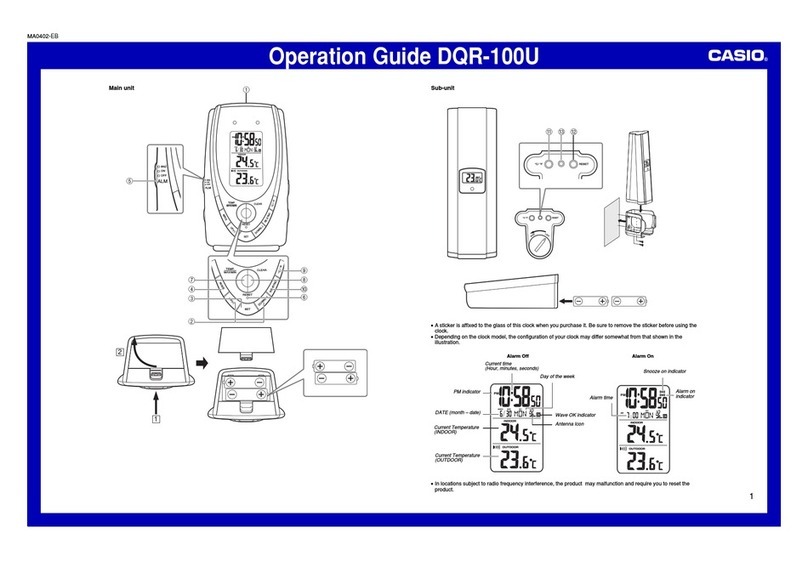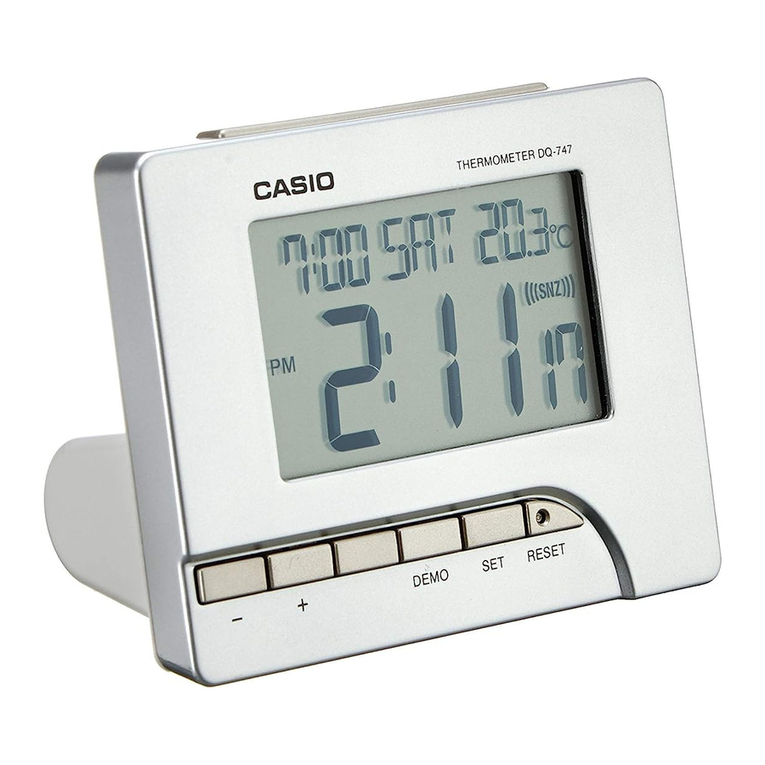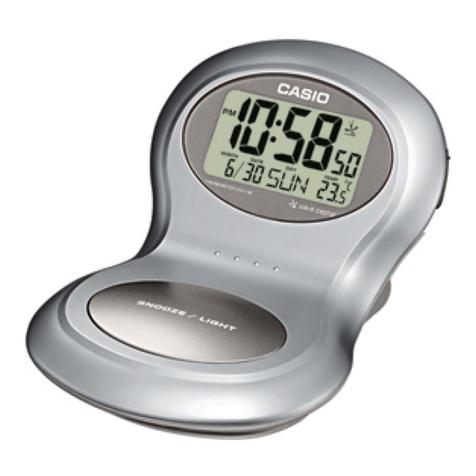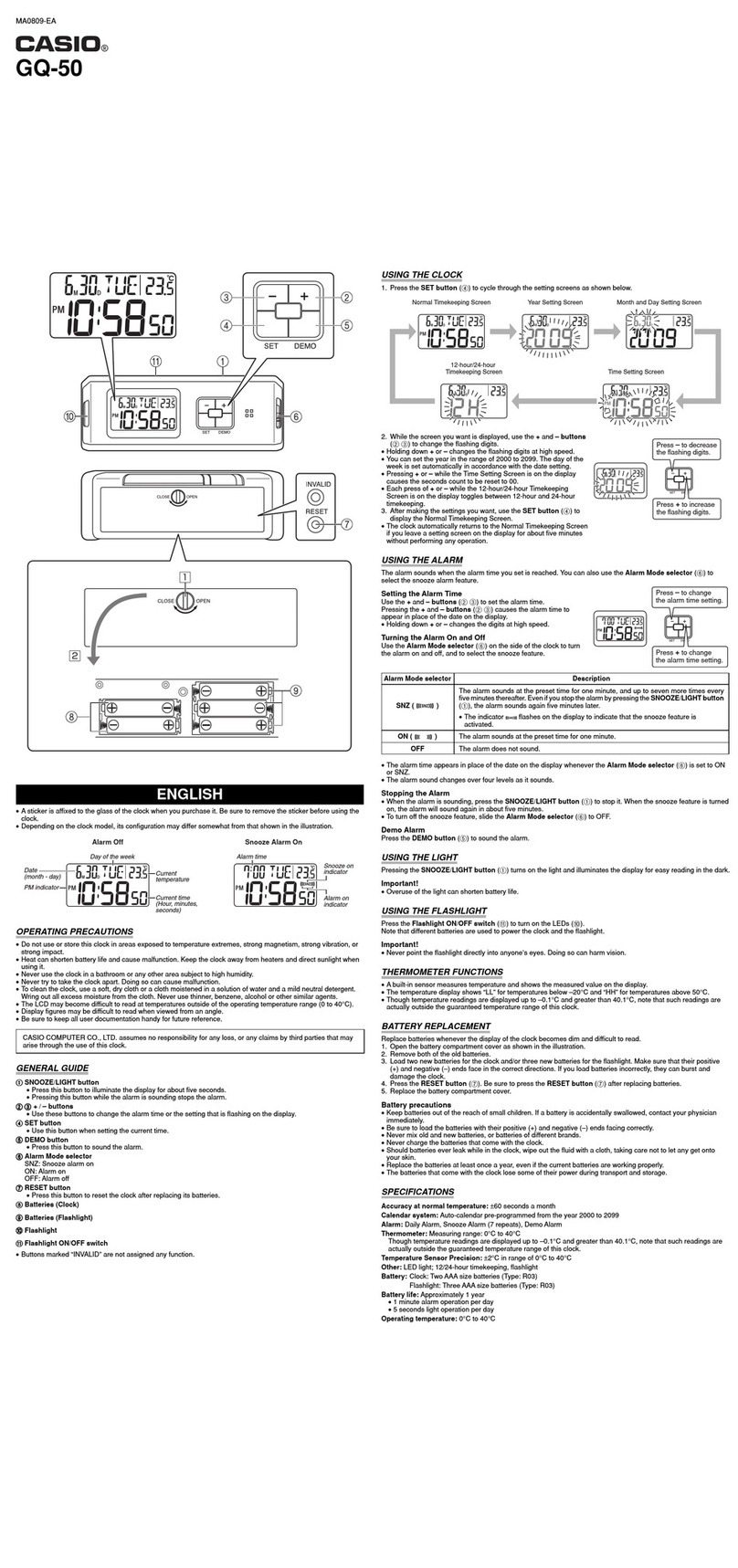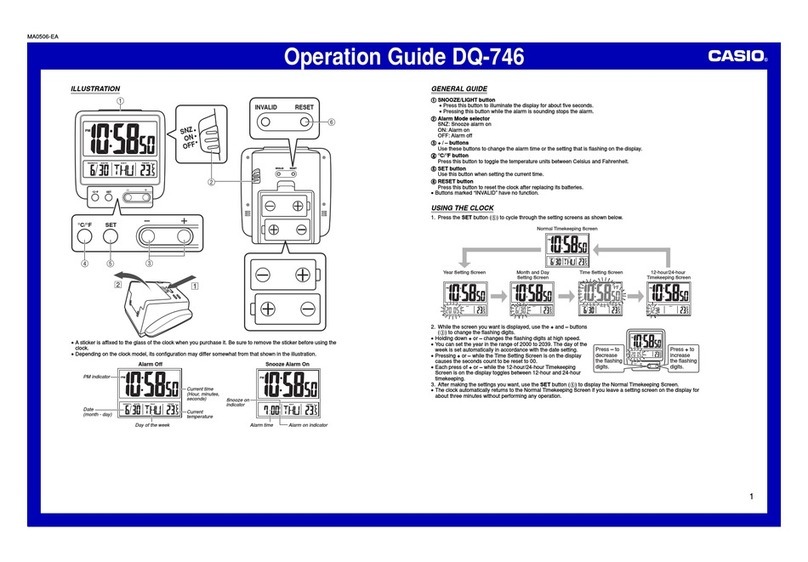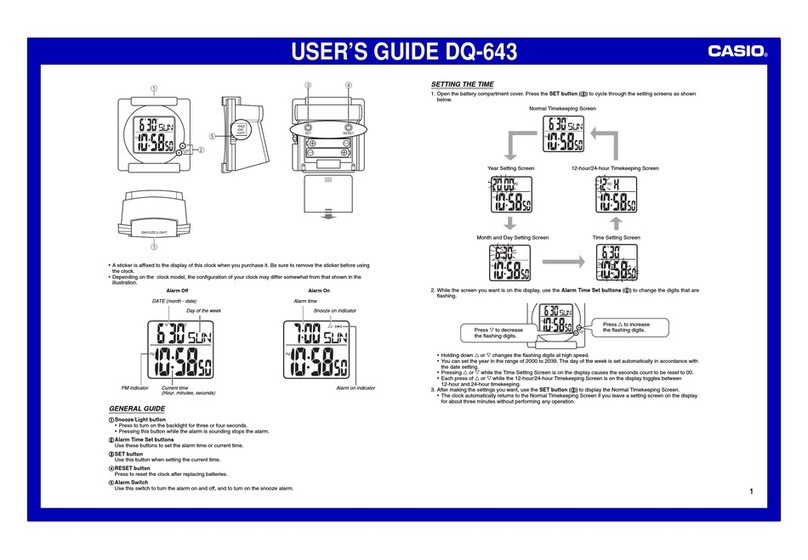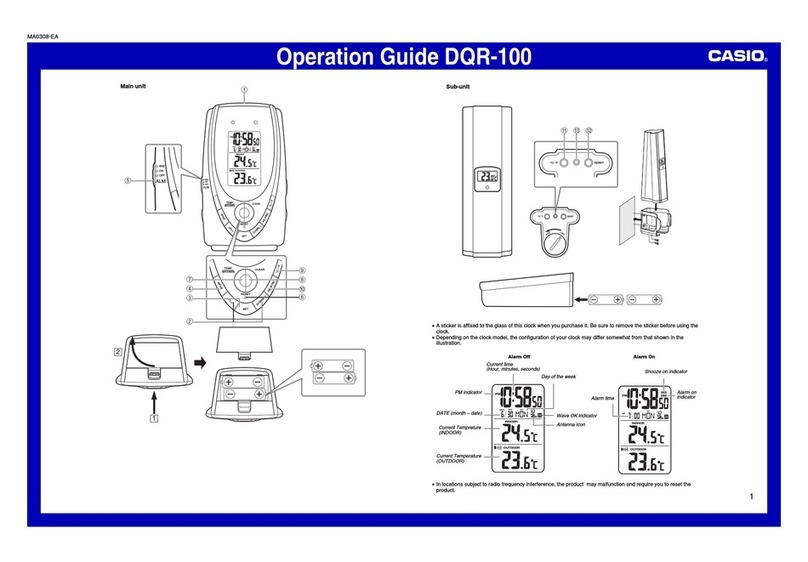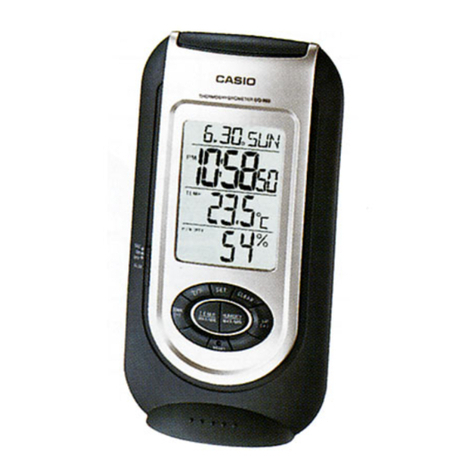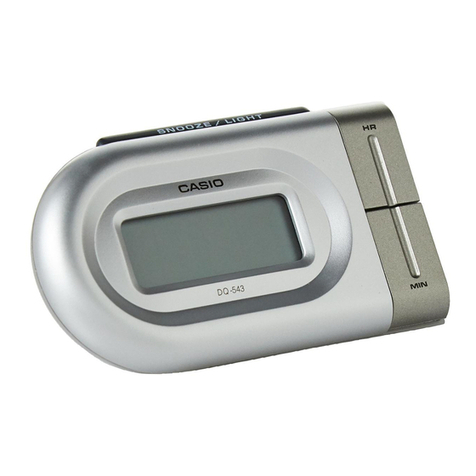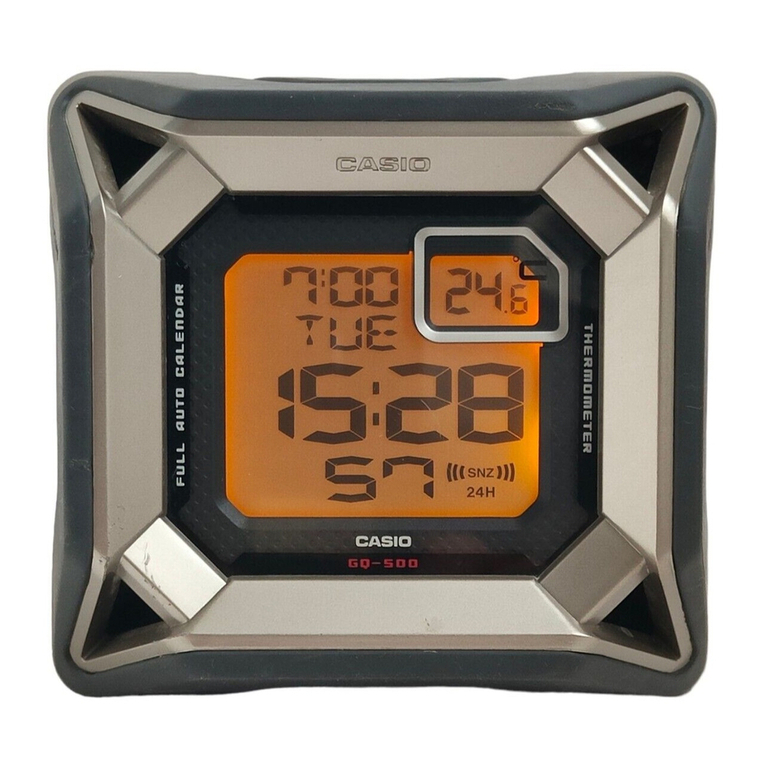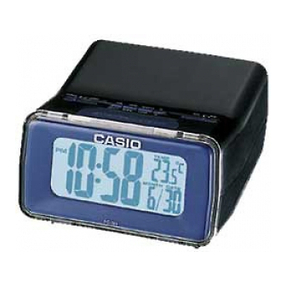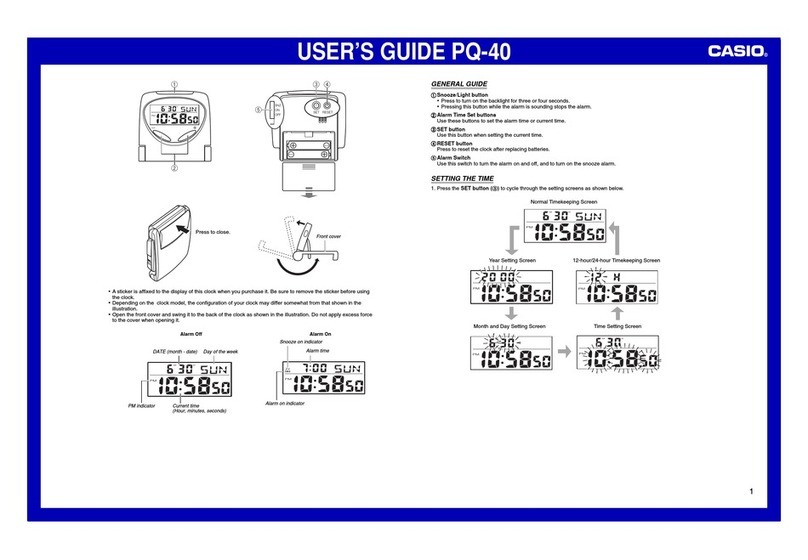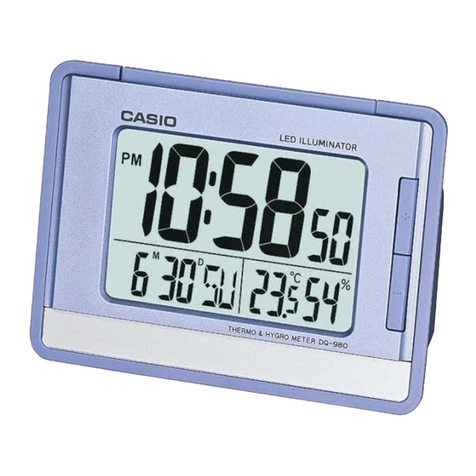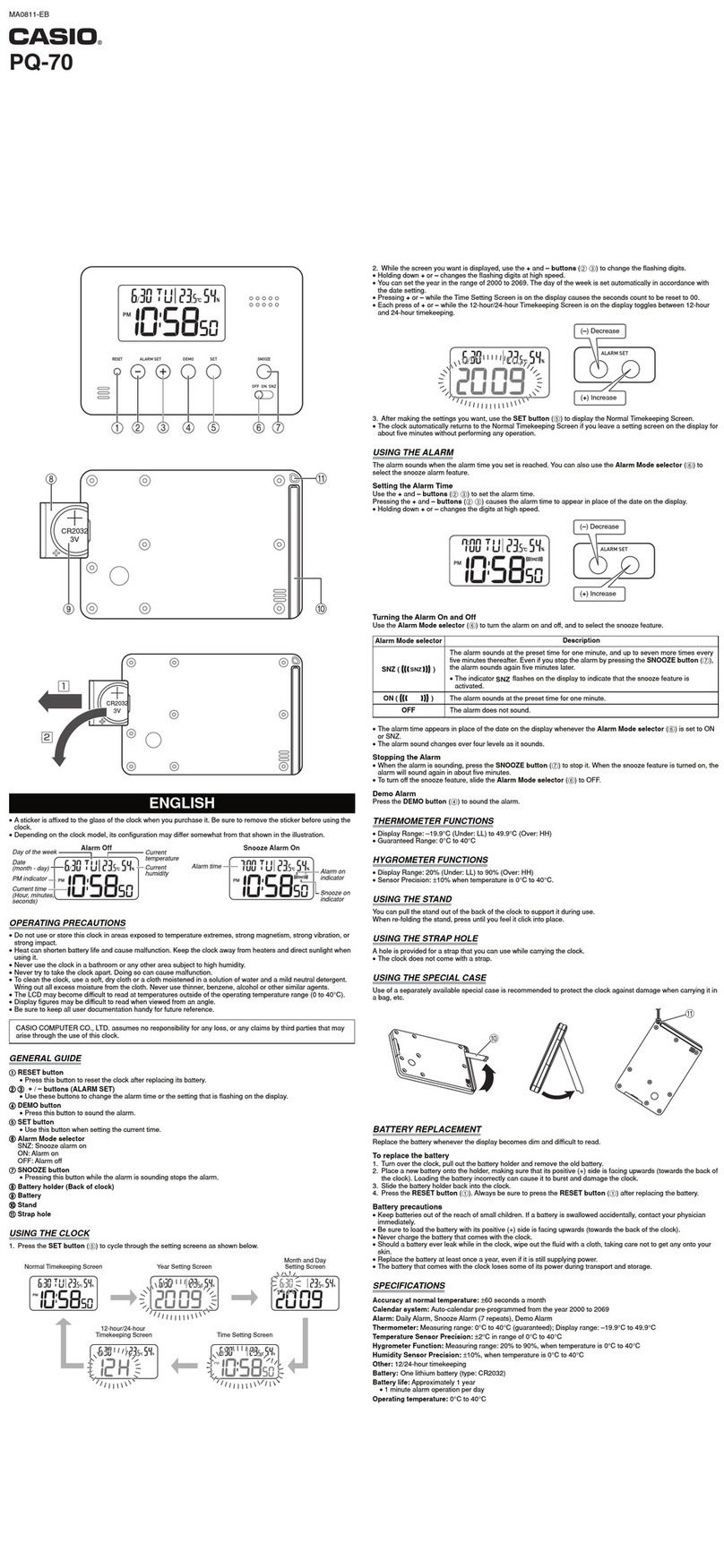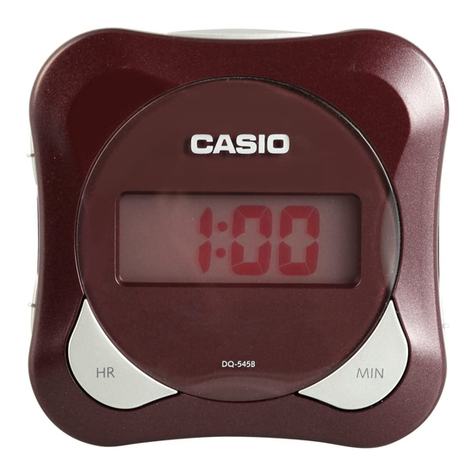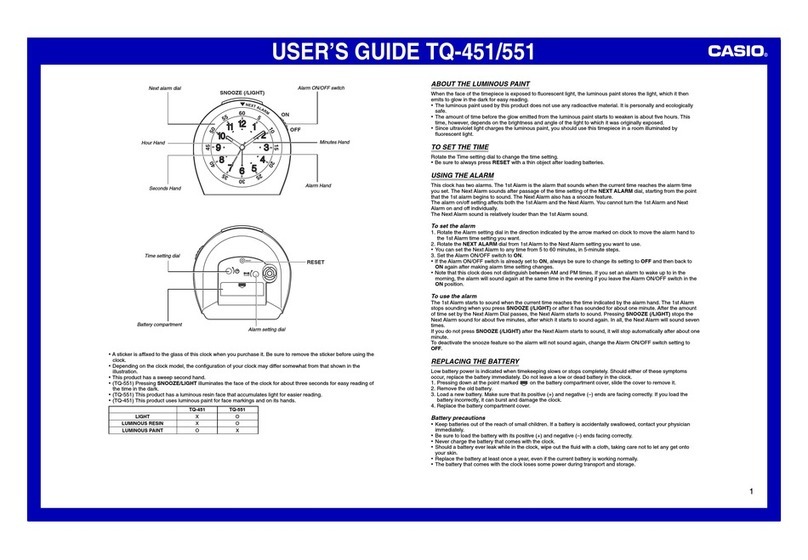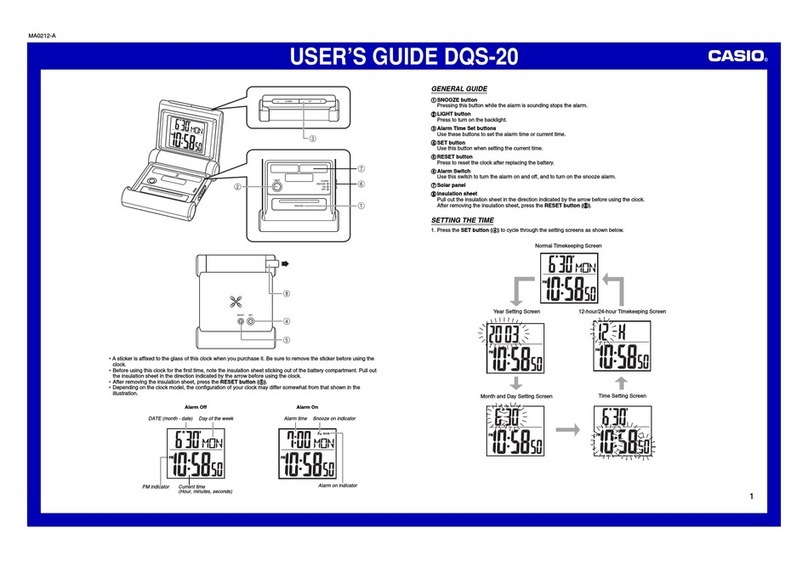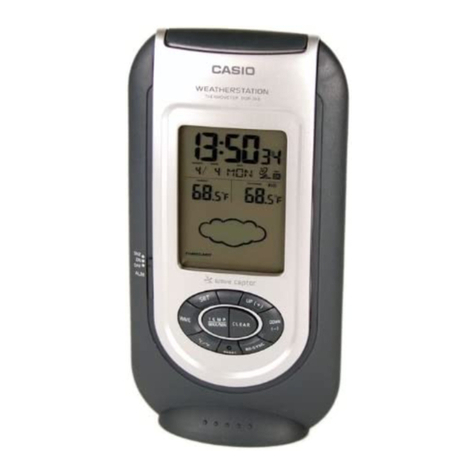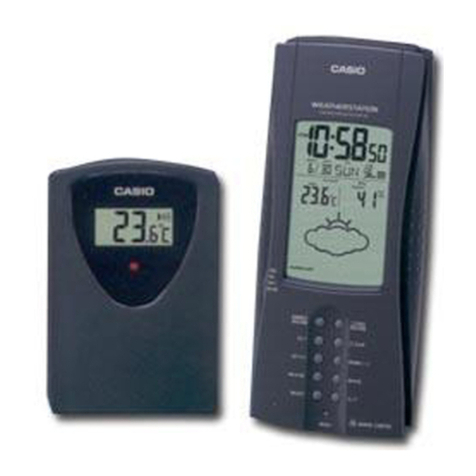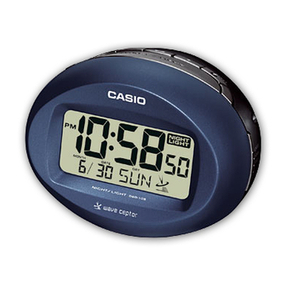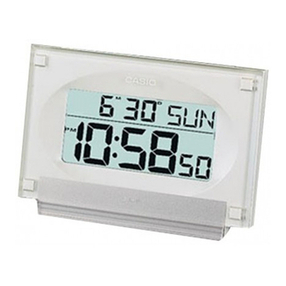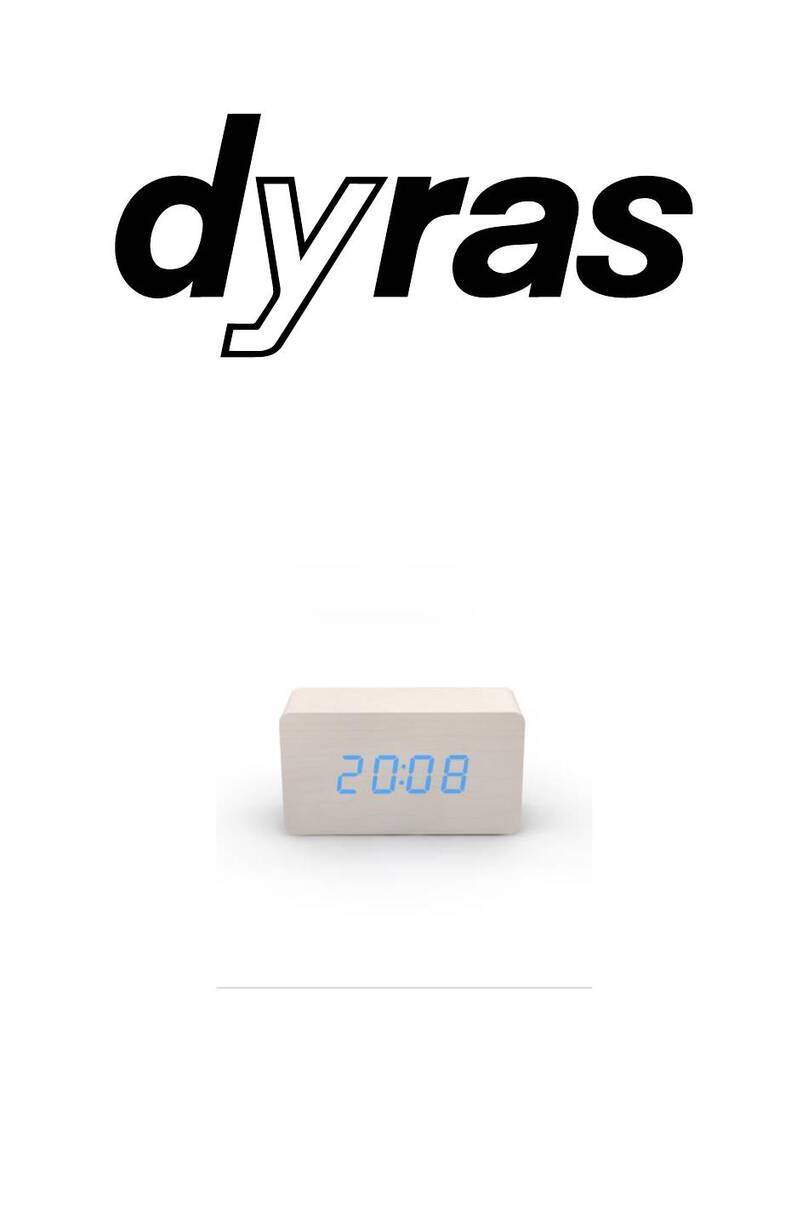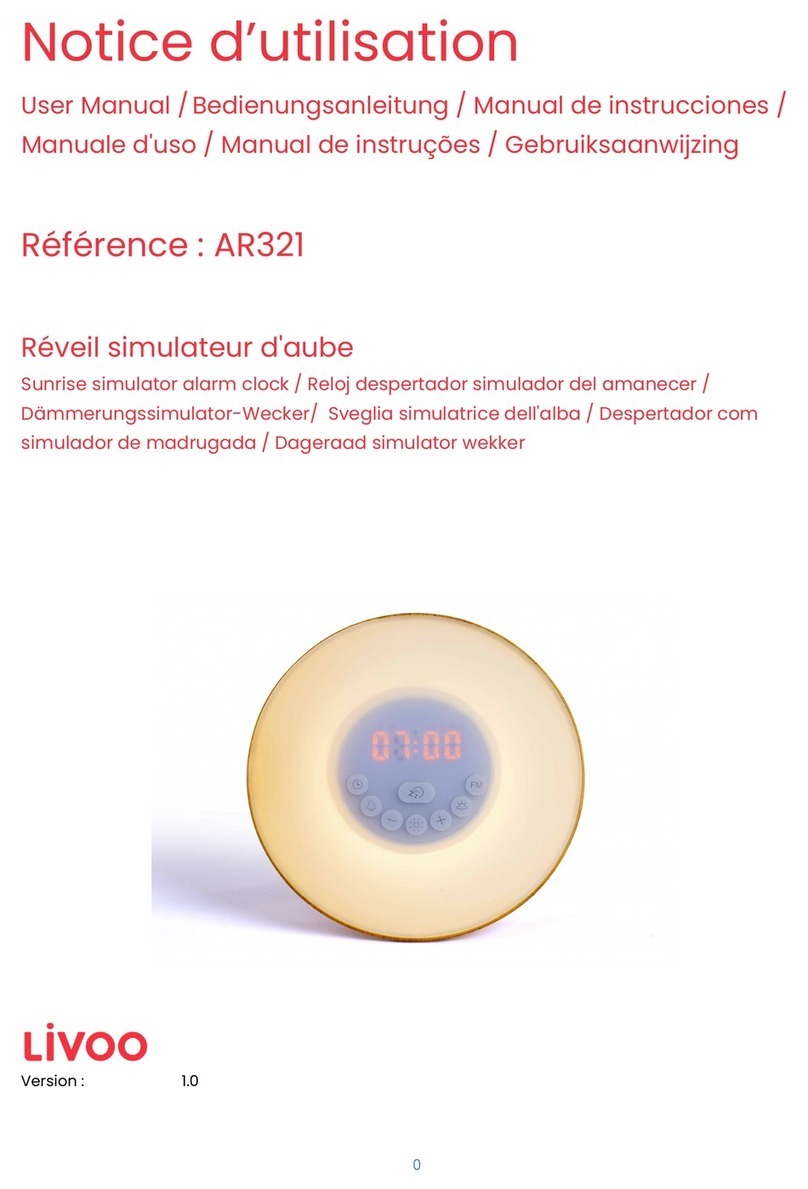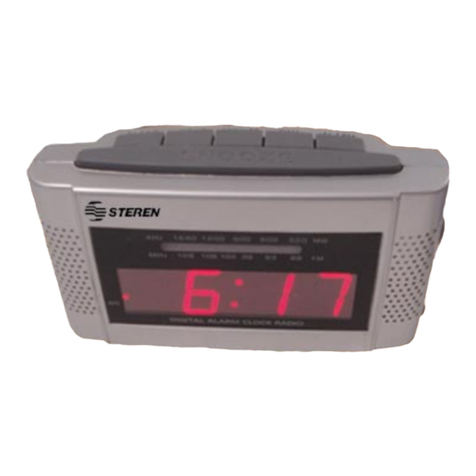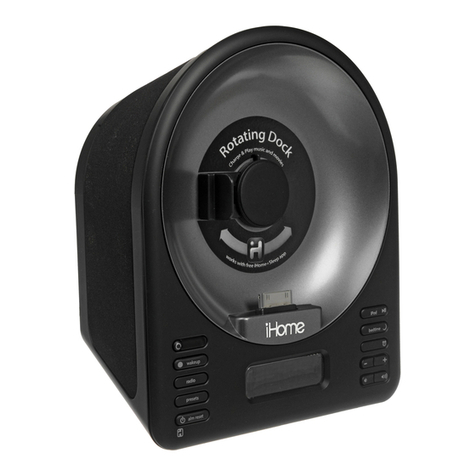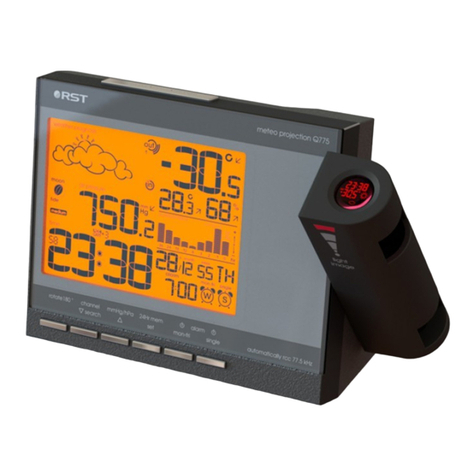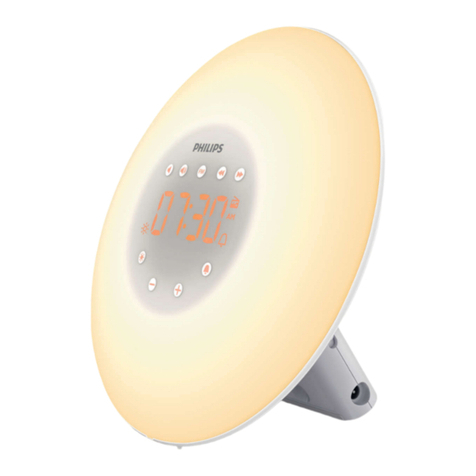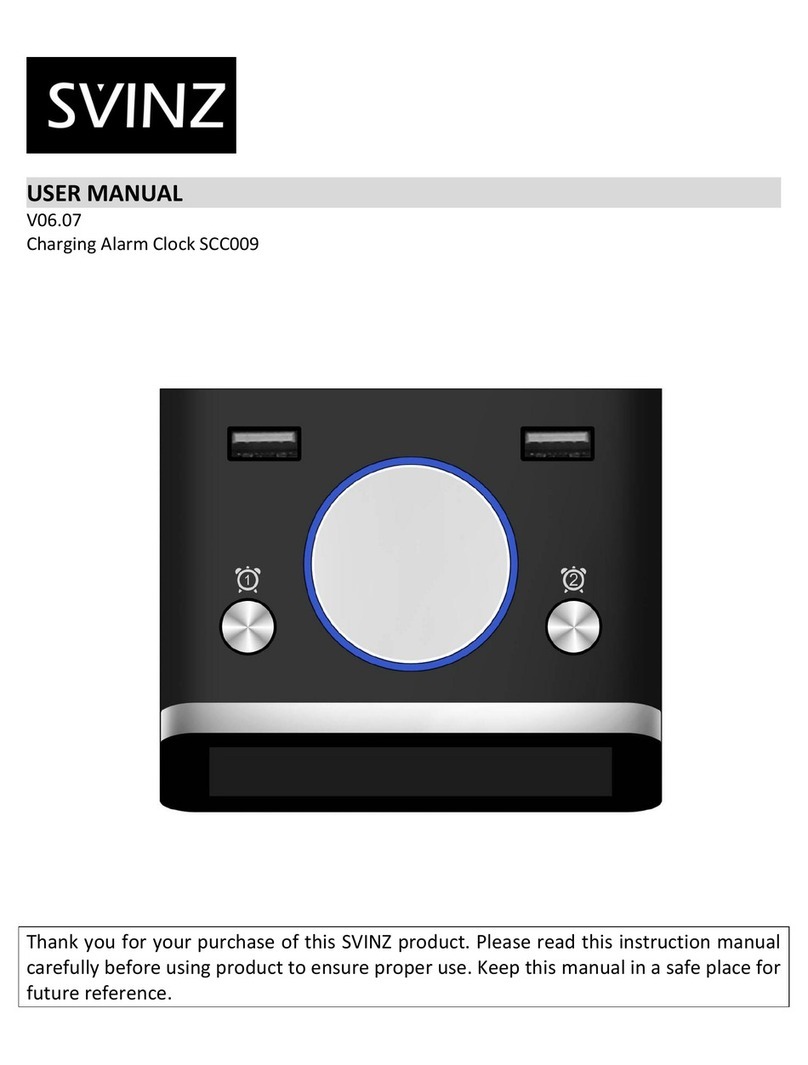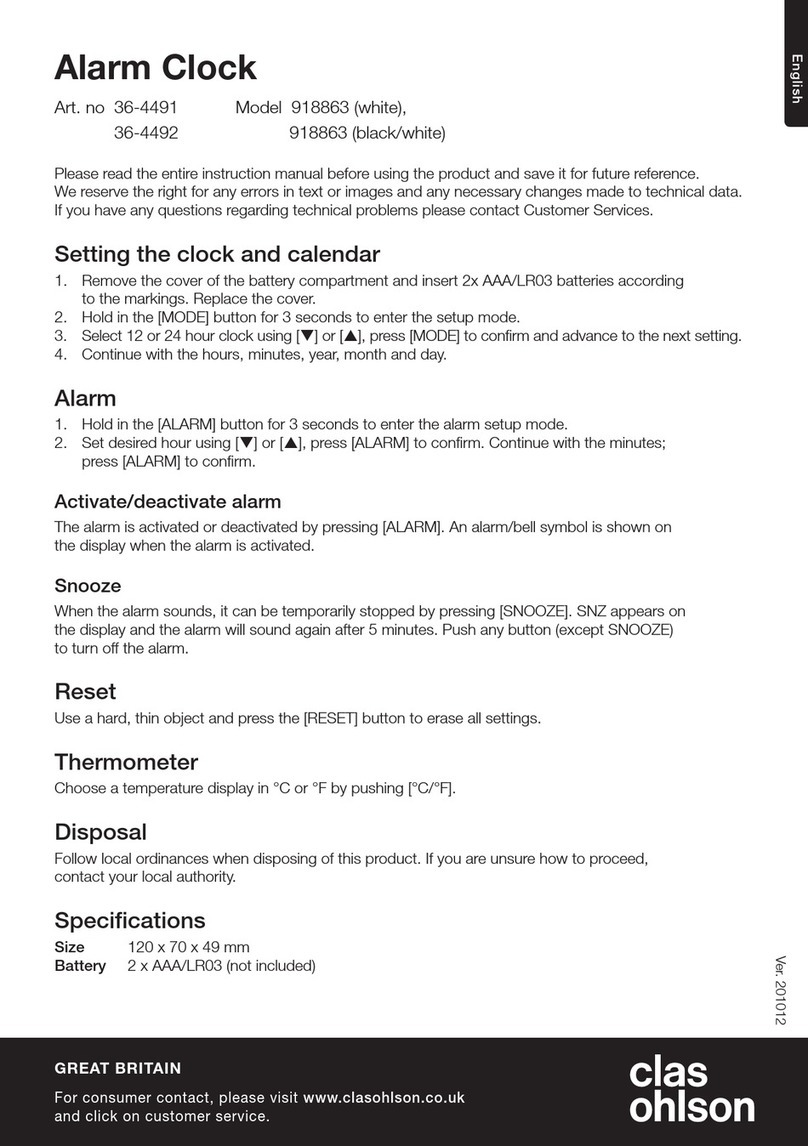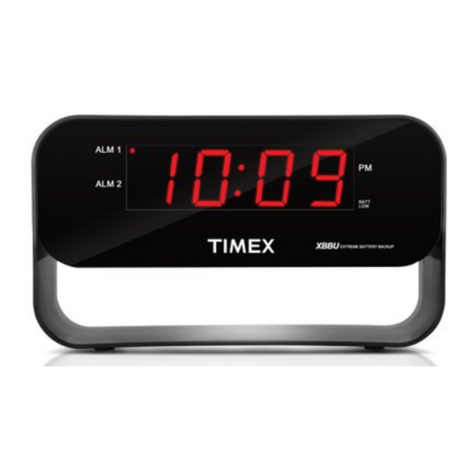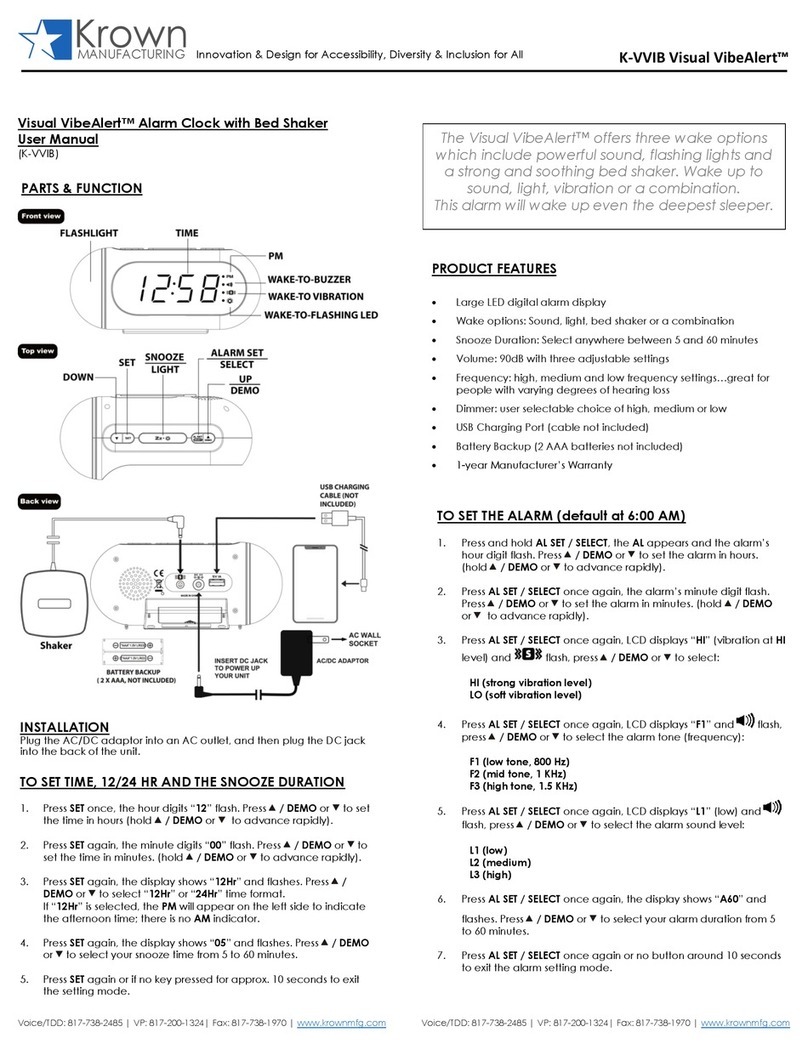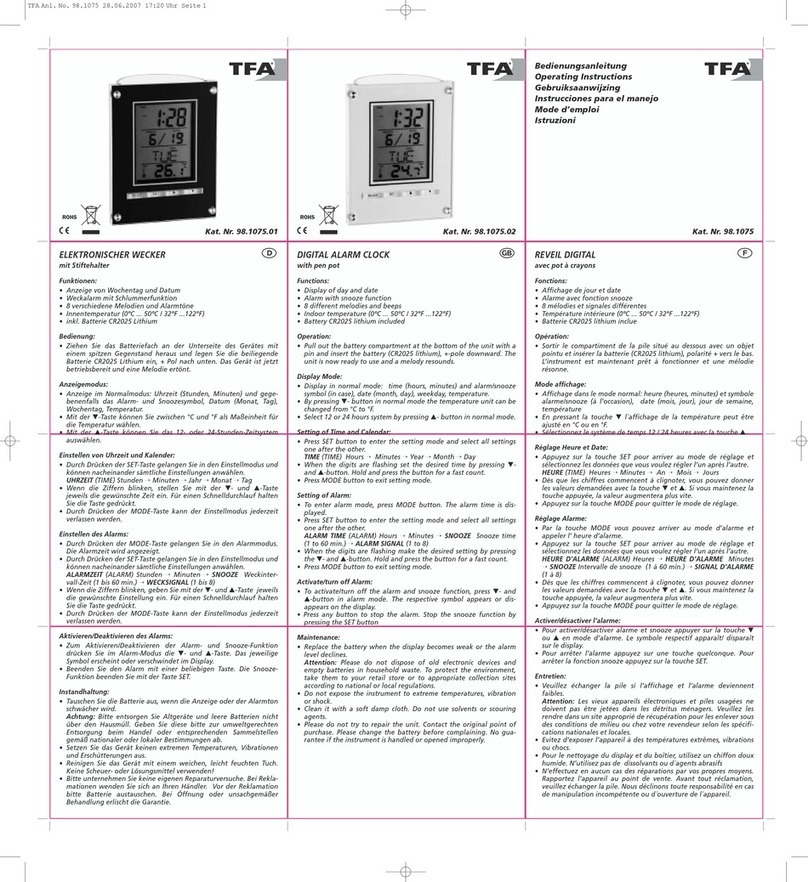Operation Guide DQD-70B
2
TIME CALIBRATION SIGNAL RECEPTION PRECAUTIONS
•This clock can receive the time calibration signals transmitted from
Mainflingen, Germany and Rugby, England. It automatically selects
reception from the transmitter whose signal is strongest.
Mainflingen: Signal reception is possible within approximately 1800 km
of the transmitter.
Rugby: Signal reception is possible within approximately 1800 km of the
transmitter.
•Even when the clock is within the reception range, signal reception is
impossible if the signal is blocked by mountains or other geological
formations between the clock and signal source.
•Signal reception is affected by weather, atmospheric conditions, and
seasonal changes.
•The time calibration signal is bounced off the ionosphere. Because of
this, such factors as changes in the reflectivity of the ionosphere, as well
as movement of the ionosphere to higher altitudes due to seasonal
atmospheric changes or the time of day may change the reception range
of the signal and make reception temporarily impossible.
•Reception is best when the back of the clock is facing in the direction of the transmitter. As a general rule, point
the back of the clock towards the transmitter that is closest to your location. If you experience reception problems,
try pointing it in the direction of the other transmitter. Note, however, that moving the clock while the time
calibration signal receive operation is taking place will make stable reception impossible.
•Think of the clock as acting like a TV or radio when it is receiving the calibration signal. When receiving indoors,
move to a location as near as possible to a window. Proper signal reception can be difficult or even impossible
under the conditions listed below.
•Signal reception is normally better at night than during the day.
•Radio interference can make signal reception impossible.
•Strong electrostatic charge can result in the wrong time being set.
USING THE CLOCK
This clock can receive the time calibration signals transmitted from Mainflingen, Germany and Rugby, England.
It automatically selects reception from the transmitter whose signal is strongest.
Any of the following procedures can be used to set current date and time.
•Auto receive of the time calibration signal
•Manual receive of the time calibration signal
•Manual setting without using the time calibration signal
Auto Receive
•This clock performs a 1-minute receive operation each hour.
•A signal receive operation takes from two to fourteen minutes under good signal conditions.
•As the clock receives a time calibration signal, current signal strength is indicated by the receive indicator, which
is a horizontal line above the current time.
•A longer receive indicator line means better signal reception.
Antenna Icon
The antenna icon appears when at least one signal receive operation is successful during a day. The antenna
icon is cleared at 2 a.m. and 3 a.m. each day, and will reappear as soon as a subsequent signal receive
operation is successful.
Wave OK Indicator
The Wave OK indicator is displayed when there has been a successful receive operation within the last hour.
This indicator disappears at the top of each hour, or when you perform a manual receive operation.
Rugby
Mainflingen
1,800 kilometers
Inside, among
buildings, or near
neon signs
Inside a vehicle Near refrigerators
or other household
appliances, near
office equipment,
mobile phones or
wireless LAN
devices.
Near a construction
site, airport, or other
sources of electrical
noise, underground
or in tunnels, near
railroads, highways,
or radio stations with
interfering
frequencies.
Near high-tension
power lines Among or behind
mountains
Unsuccessful Signal Reception
The antenna icon disappears from the display if no signal receive operation is successful during a continuous
24-hour period. If this happens, try changing the position or orientation of the clock, and press the WAVE button
(6) to receive again.
Manual Receive
•Press the WAVE button (6) to start a calibration signal receive operation.
•Use the WAVE button (6) to perform a receive operation after replacing the clock’s batteries or if the auto receive
operation was not performed correctly for some reason.
•The antenna icon appears when signal reception triggered by the WAVE button (6) is successful.
Important!
•Do not perform any button or switch operation while a signal receive operation is in progress.
•The time calibration signal includes both Standard Time and Daylight Saving Time (summer time) data.
•The DST indicator appears on the display when Daylight Saving Time (summer time) data is received.
•Note that Daylight Saving Time (summer time) is turned on and off in accordance with the received time
calibration signal only. You cannot turn it on or off manually.
Setting the Time and Date Manually
•When using the clock in an area that is outside of the range of the transmitter or in an area where signal reception
is impossible for some reason, you need to manually adjust the time setting as required.
1. Press the SET button (3) to cycle through the setting screens as shown below.
Current Time Screen
Time Setting Screen 12-hour/24hour
Setting Screen
Contrast
Adjustment Screen
GMT Differential
Setting Screen
Year Setting Screen Month and Day
Setting Screen
